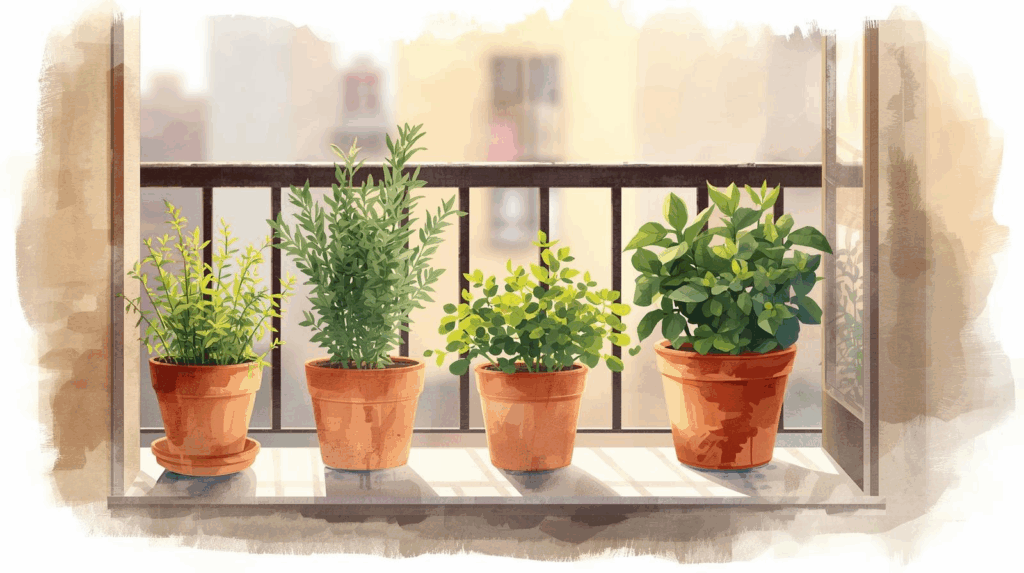
Watercolor illustration of a small balcony with terracotta pots growing healthy herbs and leafy greens.
Why Soil Mix Matters in Container Gardening
In container gardening, soil isn’t just the foundation — it’s the entire ecosystem. Unlike garden beds, where earthworms, microbes, and rainwater constantly rebalance conditions, potted plants depend completely on the mix you choose. Many beginners ask, “What is the best soil for container gardening?” The wrong blend can suffocate roots, trap water, or starve your plants of air and nutrients.
The perfect container mix strikes a delicate balance between drainage, aeration, and moisture retention, while still supplying the organic matter your plants need to thrive. It should hold enough water for steady hydration, yet dry out efficiently to prevent rot. According to the Royal Horticultural Society (RHS), a well-aerated compost that combines good structure with effective drainage is essential for keeping container roots healthy and preventing waterlogging.
Core Principles of a Good Container Mix
A great soil mix does more than just hold your plants upright. It creates a miniature environment where roots can breathe, feed, and grow freely. The best container blends combine:
- Structure: A stable yet loose base that supports roots without compacting.
- Aeration: Ingredients like perlite or vermiculite that let oxygen reach deep into the pot.
- Moisture Control: Organic materials such as peat moss or coco coir that retain water without turning soggy.
- Nutrients: Compost or worm castings that feed plants naturally and foster beneficial microbes.
Many gardeners wonder, “Can I use garden soil in pots?”
Pre-bagged “garden soil” or “topsoil,” though tempting for convenience, often fails in pots. It’s too dense, holds too much moisture, and lacks the air spaces container roots depend on. Worse, it can introduce pests or diseases to your setup.
Key takeaway: A light, fluffy, nutrient-balanced mix always outperforms heavy, dense soil. In container gardening, air is as essential as water — and your soil blend should make room for both.
All-Purpose DIY Container Soil Recipe
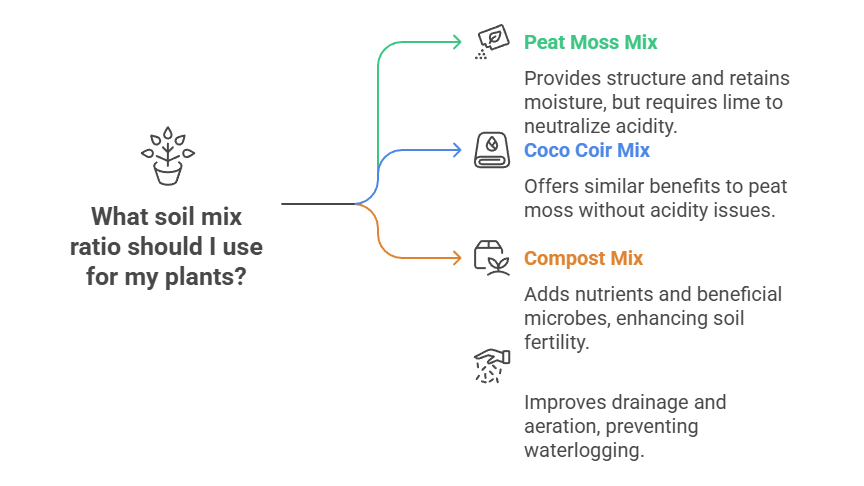
Basic soil mix components for container gardening — balance structure, nutrients, and drainage with peat or coco coir, compost, and perlite or vermiculite.
A reliable container mix forms the backbone of healthy potted plants — and this all-purpose recipe works for most vegetables, herbs, and flowers. It’s light, well-draining, and packed with nutrients that support root growth and microbial activity. According to the RHS, you can create a balanced potting mix using comparable ratios and eco-friendly materials for reliable results.
Recommended base recipe:
- 2 parts peat moss or coco coir — provides structure and retains moisture.
- 2 parts compost — adds nutrients, beneficial microbes, and organic matter.
- 1 part perlite or vermiculite — improves drainage and keeps the mix aerated.
- 1 tablespoon garden lime per gallon of peat moss (only if using peat) — neutralizes acidity.
This combination keeps your soil loose and breathable while maintaining consistent moisture. It mimics the ideal balance of natural soil, but in a compact, self-contained form that suits container gardening perfectly.
Is coco coir better than peat moss for containers?
Peat vs. Coco Coir — Which Should You Choose?
- Peat moss is lightweight and excellent at holding water, but it’s a nonrenewable resource harvested from bogs, making it less eco-friendly.
- Coco coir, made from coconut husks, is a sustainable alternative with similar moisture retention and aeration properties. It also decomposes more slowly, giving your mix a longer lifespan.
For most gardeners today, coco coir is the greener, longer-lasting choice, especially for recurring container use.
Why Compost Balance Matters
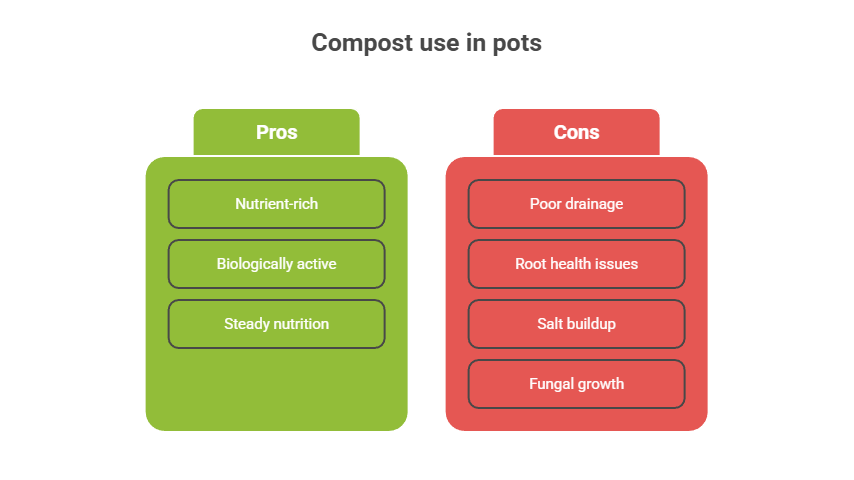
Key pros and cons of using compost in pots — nutrient-rich but can cause drainage and salt issues if overused.
Not all compost is equal. High-quality, mature compost is nutrient-rich and biologically active, but too much can make the mix dense and prone to waterlogging. Can you use too much compost in pots? Yes — overdoing it can hurt drainage and root health. The ideal ratio — about 40% compost — ensures steady nutrition without compromising airflow and moisture balance.
Overloading compost may also lead to salt buildup or fungal growth in closed containers. Aim for quality, not quantity: use well-rotted, earthy-smelling compost rather than fresh organic waste.
Once you’ve built a strong base mix, the next step is learning how to adapt it — because different plants and climates call for slightly different blends.
Customizing the Mix: Amendments for Different Needs
Once you’ve mastered the base mix, you can tailor it to match specific plant requirements or environmental challenges. How do you make soil mix for potted plants? The key is to start with a solid foundation, then adjust with targeted amendments to suit your plants’ needs.
By purpose or plant type:
- Extra fertility: Mix in worm castings or composted manure for slow, steady nutrition — ideal for leafy greens and fruiting crops.
- Calcium boost: Add crushed eggshells or oyster shells to prevent blossom-end rot in tomatoes and peppers.
- Drainage boost: Increase perlite or add coarse sand for succulents, cacti, and Mediterranean herbs like rosemary.
- Organic feeding: Blend in slow-release fertilizer granules or water with a liquid seaweed or fish emulsion every few weeks for balanced feeding.
Optional visual suggestion:
Create an infographic comparing:
- The Basic All-Purpose Mix (peat/coco, compost, perlite)
vs. - Custom Mixes for specific needs (e.g., “Tomato Blend” with lime and calcium, “Succulent Blend” with sand and perlite, “Herb Blend” with coco coir and
Why You Shouldn’t Use Topsoil in Containers
Using garden topsoil in pots might seem like a shortcut, but it’s one of the most common mistakes in container gardening. Can I use regular garden soil for container gardening? The short answer: no — containers don’t behave like garden beds. They’re closed ecosystems that depend entirely on the soil mix you create.
Main problems with topsoil:
- Compaction: Topsoil becomes dense and airless in pots, suffocating roots and blocking drainage.
- Poor drainage: Water tends to pool in containers filled with heavy earth, leading to root rot.
- Pest and disease risk: Garden soil can carry weed seeds, insect eggs, and harmful pathogens into your pots.
Experts consistently warn against its use — EarthBox, RHS, and multiple university extension programs all emphasize that topsoil should be avoided in containers because it simply can’t provide the necessary aeration or consistency for healthy plant growth.
Key takeaway: Think of a container as a miniature ecosystem — it relies on a well-designed soil mix that keeps air, water, and nutrients in balance. Regular soil is too static and unpredictable for that environment.
Adjusting Soil pH and Texture for Specific Plants
Even the best base mix can benefit from fine-tuning to match your plants’ needs. How do I adjust soil pH for container plants? It starts with understanding what your plants prefer and then tailoring the mix accordingly.
pH Basics
Most vegetables, herbs, and flowers thrive in a slightly acidic to neutral range (6.2–7.0). This is where nutrients like nitrogen and potassium are most available to roots. If your mix becomes too acidic (below 6.0), you may notice yellowing leaves or slow growth — classic signs of nutrient lockout. If it’s too alkaline, leaves can curl or show pale edges due to iron deficiency.
To adjust:
- Add garden lime → raises pH, ideal for neutral-loving plants such as lettuce, spinach, and most herbs.
- Add elemental sulfur → lowers pH, perfect for acid-loving plants like blueberries, azaleas, or strawberries.
Texture Tweaks
- Finer mix: Works best for leafy greens and herbs, which prefer steady moisture and even root spread.
- Coarser mix: Suits root crops and succulents, improving drainage and preventing rot. If the texture is too dense, roots struggle for oxygen — often visible as stunted or pale growth. A mix that’s too coarse, however, dries too fast and stresses tender plants like basil or lettuce.
In short, the perfect mix is adaptive — adjust texture and acidity based on what you grow, not just where you grow it. Thoughtful tweaks turn a standard soil recipe into a truly customized growing medium.
Example Mixes by Plant Category
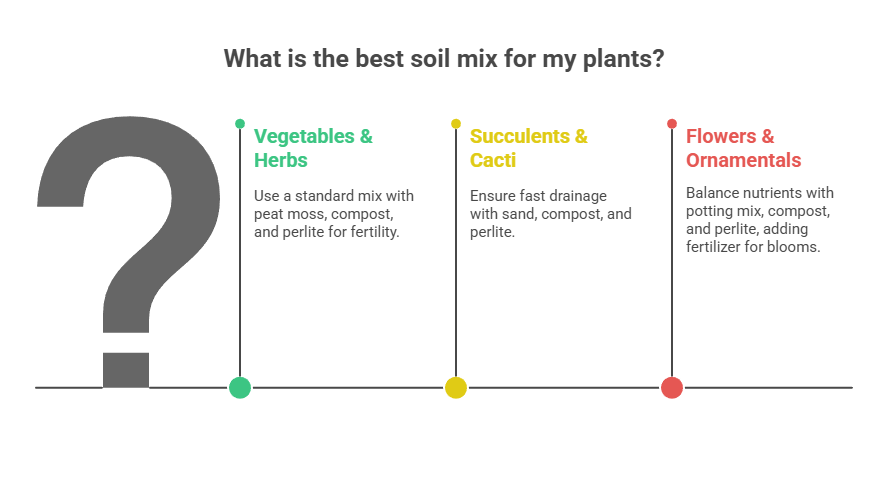
Container mixes aren’t one-size-fits-all — different plants thrive in slightly adjusted recipes. What is the best soil mix for vegetables, herbs, or flowers? Use these quick-reference formulas to fine-tune your results:
Vegetables & Herbs
- Use the standard all-purpose mix:
- 2 parts peat moss or coco coir
- 2 parts compost
- 1 part perlite or vermiculite
- Optional: Add worm castings for extra fertility.
Best for: tomatoes, peppers, basil, lettuce, and spinach.
Succulents & Cacti
- Adapt your mix for fast drainage:
- 2 parts coarse sand or grit
- 1 part compost
- 1 part perlite or pumice
- Skip water-retaining materials like peat.
Best for: aloe, jade, echeveria, and cactus varieties.
Flowers & Ornamentals
- Prioritize nutrient balance and bloom support:
- 2 parts potting mix
- 1 part compost
- 1 part perlite
- Add a slow-release fertilizer or organic bloom booster.
Best for: geraniums, petunias, begonias, and balcony flowers.
Maintenance: Keeping Container Soil Healthy Over Time
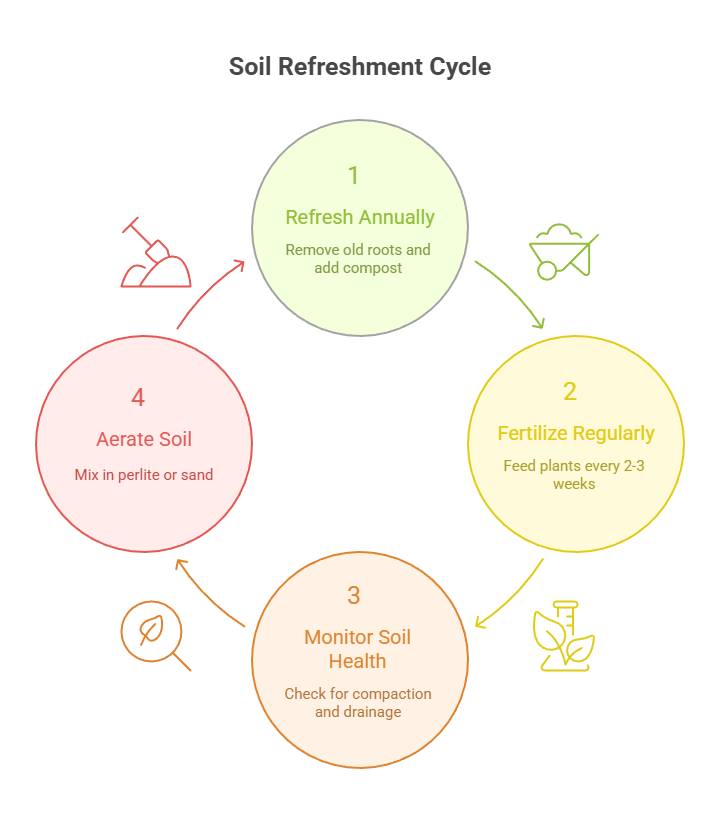
Keep your container soil thriving: refresh it once a year, fertilize every few weeks, watch for compaction, and aerate to maintain healthy roots.
Even the best soil mix loses structure and nutrients over time. Can you reuse old potting soil? Yes — but only if you refresh it properly. To keep your container garden thriving:
1. Refresh annually:
At the start of each growing season, remove old roots and mix in fresh compost. If the coir or peat looks dry and compacted, rehydrate it thoroughly before replanting.
2. Fertilize regularly:
Feed your plants every 2–3 weeks during active growth. Choose an organic liquid fertilizer or slow-release granules depending on your setup.
3. Monitor soil health:
Watch for compaction, poor drainage, or reduced growth — all signs your soil needs aeration. Mix in perlite, coarse sand, or fresh potting mix to restore texture and oxygen flow.
Healthy soil is the engine of container gardening — refreshing, feeding, and aerating it keeps your plants growing strong season after season.
Common Mistakes to Avoid
Even with a solid recipe, small errors can undermine your container garden’s success. Watch out for these frequent pitfalls:
Overwatering compacted mixes:
Dense or old soil holds too much water, suffocating roots. Always aim for a light, airy texture and ensure proper drainage before planting.
Using garden soil or unsterilized compost:
Outdoor soil introduces pests, weeds, and diseases to your containers. Stick with sterile potting ingredients and fully composted materials.Many beginners wonder, “What’s the difference between potting soil and garden soil?” Potting mixes are specifically formulated for aeration, drainage, and nutrient retention — qualities garden soil simply lacks when confined to a container.
Skipping fertilizer or drainage holes:
Containers lose nutrients quickly through watering. Regular feeding and well-drained pots are essential for long-term health.
Ignoring pH drift over time:
Water and fertilizers gradually shift soil acidity. Test every few months, especially for sensitive crops like tomatoes, herbs, and berries.
Final Thoughts & Takeaways: Build It Right, and It Lasts All Season
A well-balanced mix — 2 parts coir or peat, 2 parts compost, 1 part perlite — gives your plants everything they need: structure, airflow, moisture, and nutrients. Once you understand the core ratios, tweaking them becomes second nature.
Many gardeners ask, “Can I reuse old potting mix?” You can — but only if you refresh it by removing old roots, rehydrating the base, and adding compost or perlite to restore structure and nutrients.
Soil is a living system, not a static product. It adapts to your plants, your watering habits, and even the weather. Experiment, adjust, and pay attention — your containers will reward you with strong roots and steady growth.
Mix your first batch this weekend and see the difference a healthy container base can make.
FAQ Best Soil Mix for Healthy Container Gardens
1. What’s the difference between potting soil and garden soil?
Potting soil is lightweight, sterile, and designed for drainage — ideal for containers. Garden soil is denser, often contains clay, and can harbor pests or diseases, making it unsuitable for pots.
2. Can I reuse old potting mix?
Yes, but refresh it before reusing. Remove roots, mix in fresh compost, and rehydrate the base. For disease-prone plants, replace or sterilize the mix to prevent contamination.
3. How do I improve drainage naturally?
Add perlite, coarse sand, or small bark chips to the mix. Ensure your pots have drainage holes and avoid compacting the soil when planting.
4. Should I sterilize compost before use?
If you’re using homemade or unverified compost, sterilizing it helps kill weed seeds and pathogens. Bake moist compost at 80–90°C (175–195°F) for 30 minutes.
5. How often should I refresh my container soil?
Once a year, ideally at the start of the growing season. Add new compost or coir to restore structure and nutrients for strong root development.
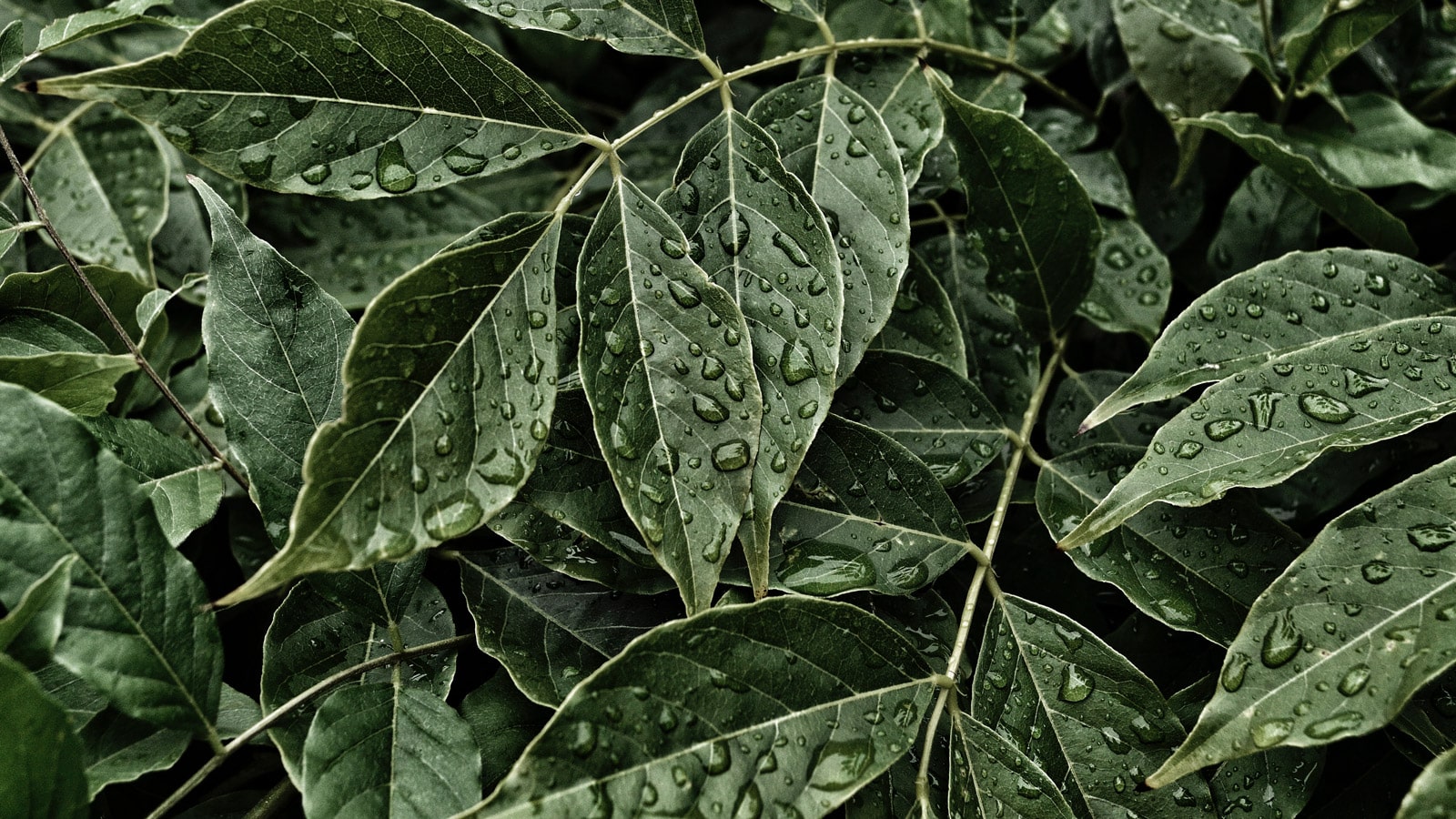

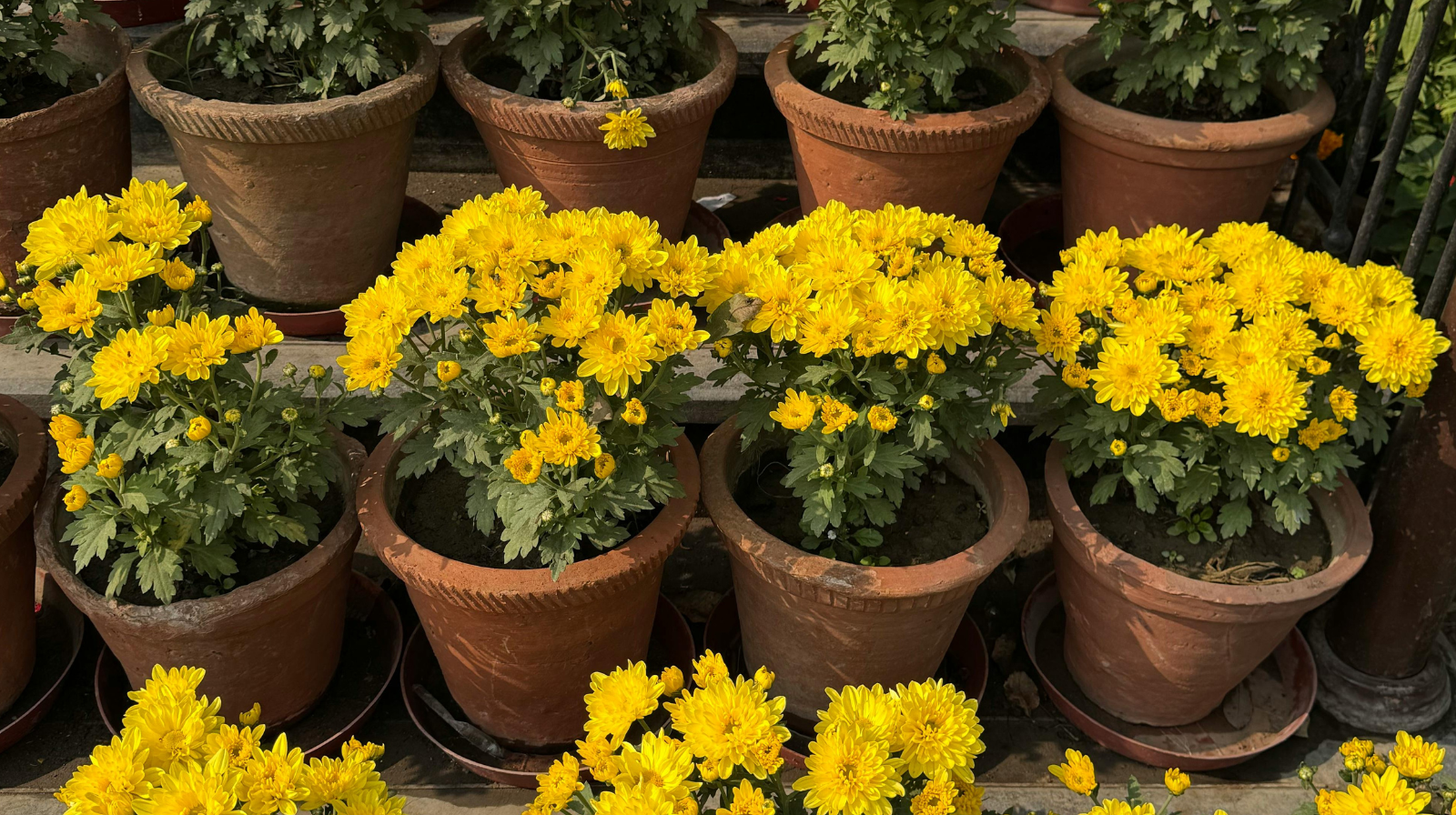

Leave a Reply